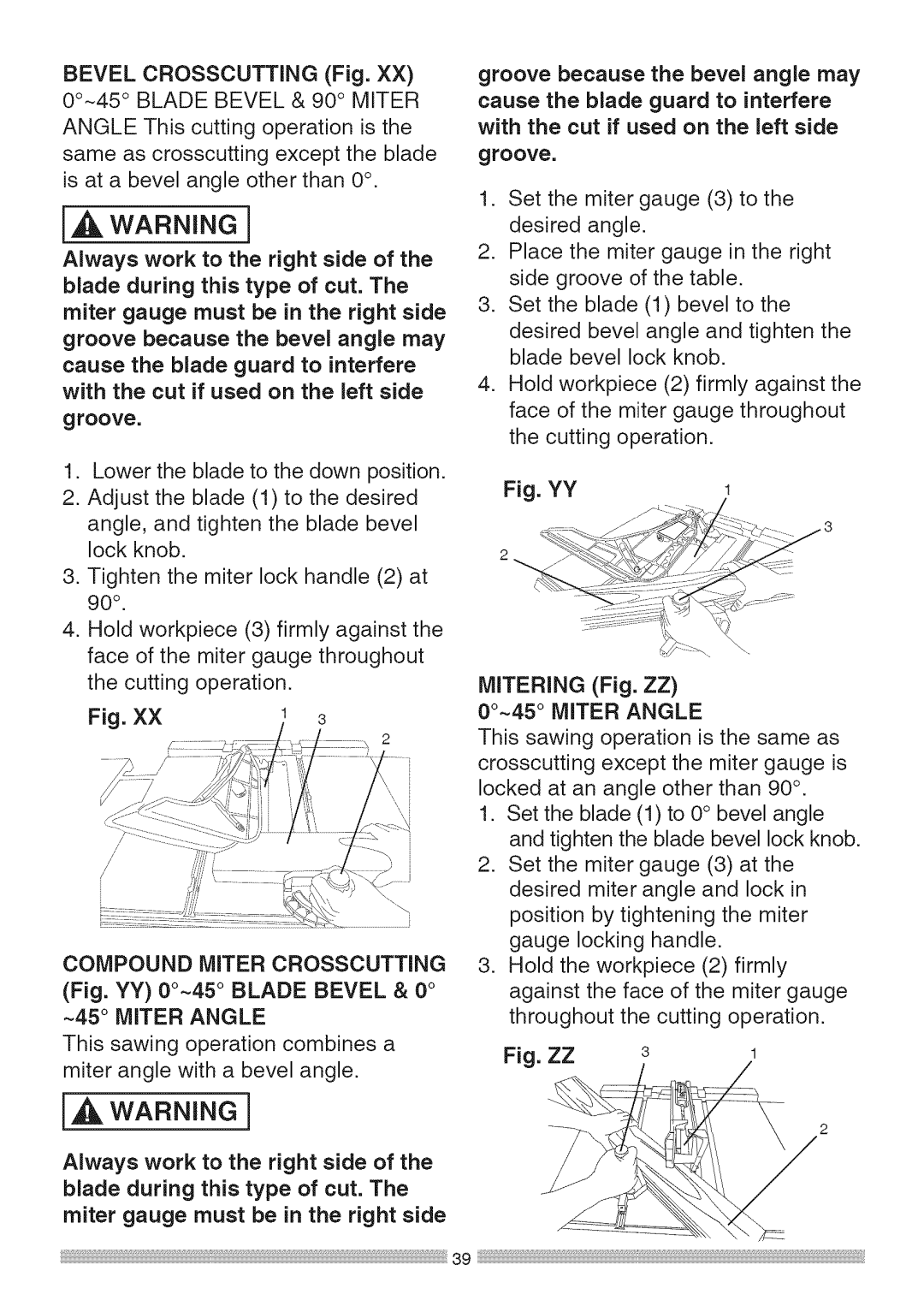
BEVEL CROSSCUTTING (Fig. XX)
[_ WARNING]
Always work to the right side of the blade during this type of cut. The miter gauge must be in the right side groove because the bevel angle may cause the blade guard to interfere with the cut if used on the left side groove.
1.Lower the blade to the down position.
2.Adjust the blade (1) to the desired angle, and tighten the blade bevel lock knob.
3.Tighten the miter lock handle (2) at 90°"
4.Hold workpiece (3) firmly against the face of the miter gauge throughout the cutting operation.
Fig. XX | 1 3 |
2
/
/
/
COMPOUND MITER CROSSCUTTING
(Fig. YY) 00~45° BLADE BEVEL & 0° ~45° MITER ANGLE
This sawing operation combines a miter angle with a bevel angle.
[_ WARNING]
Always work to the right side of the blade during this type of cut. The miter gauge must be in the right side
groove because the bevel angle may cause the blade guard to interfere with the cut if used on the left side groove.
1.Set the miter gauge (3) to the desired angle.
2.Place the miter gauge in the right side groove of the table.
3.Set the blade (1) bevel to the desired bevel angle and tighten the blade bevel lock knob.
4.Hold workpiece (2) firmly against the face of the miter gauge throughout the cutting operation.
Fig. YY
2
MiTERiNG (Fig. ZZ)
00~45° MITER ANGLE
This sawing operation is the same as crosscutting except the miter gauge is locked at an angle other than 90°.
1.Set the blade (1) to 0° bevel angle and tighten the blade bevel lock knob.
2.Set the miter gauge (3) at the desired miter angle and lock in position by tightening the miter gauge locking handle.
3.Hold the workpiece (2) firmly against the face of the miter gauge throughout the cutting operation.
Fig. ZZ 3
39 | _ |
